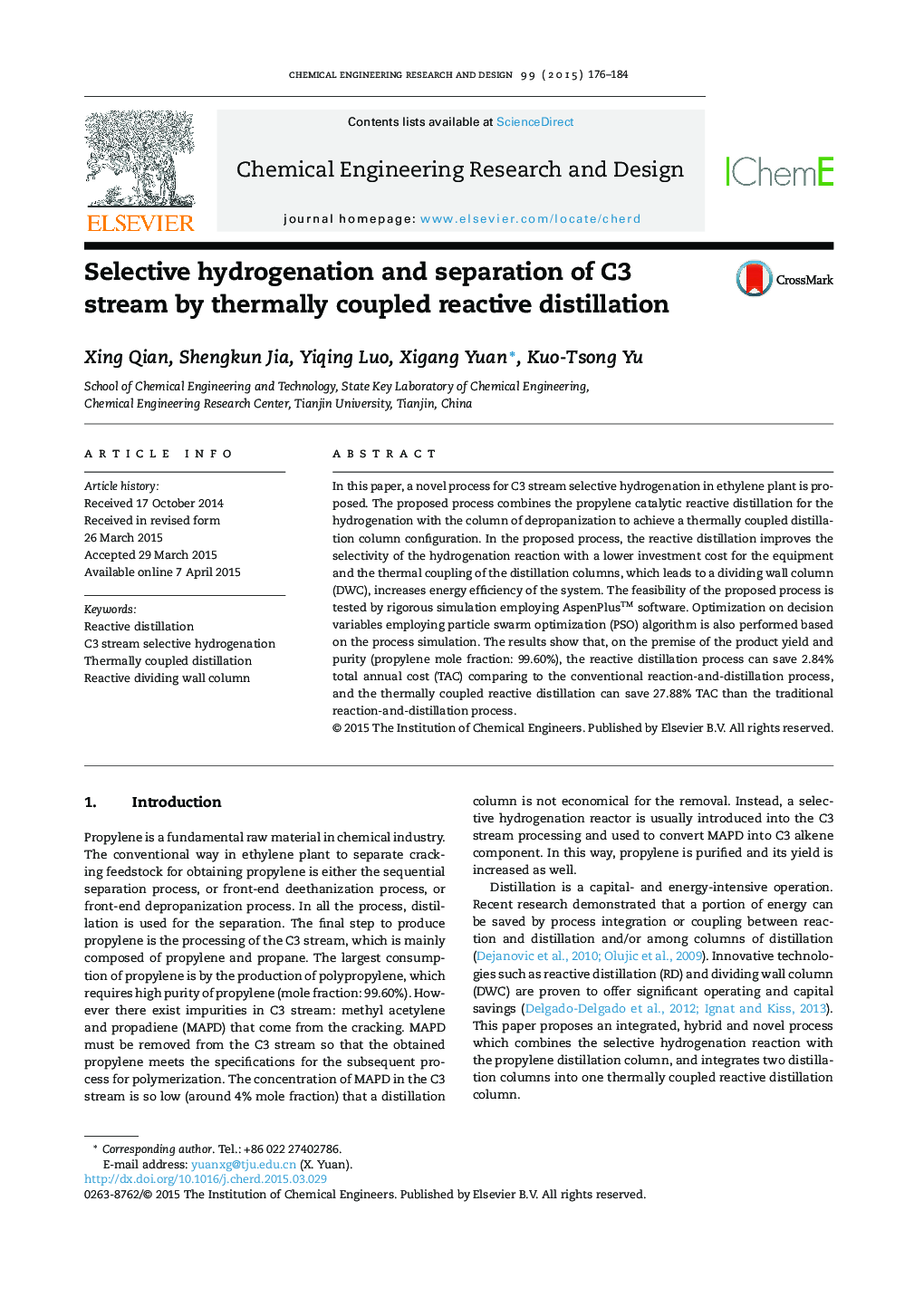| Article ID | Journal | Published Year | Pages | File Type |
|---|---|---|---|---|
| 620426 | Chemical Engineering Research and Design | 2015 | 9 Pages |
•An economically attractive RDWC for selective hydrogenation of C3 stream is proposed.•The feasibility of the proposed process is tested by rigorous simulation.•Optimization of the RDWC is performed by a PSO algorithm.•The RDWC configuration can save 27.88% TAC.
In this paper, a novel process for C3 stream selective hydrogenation in ethylene plant is proposed. The proposed process combines the propylene catalytic reactive distillation for the hydrogenation with the column of depropanization to achieve a thermally coupled distillation column configuration. In the proposed process, the reactive distillation improves the selectivity of the hydrogenation reaction with a lower investment cost for the equipment and the thermal coupling of the distillation columns, which leads to a dividing wall column (DWC), increases energy efficiency of the system. The feasibility of the proposed process is tested by rigorous simulation employing AspenPlus™ software. Optimization on decision variables employing particle swarm optimization (PSO) algorithm is also performed based on the process simulation. The results show that, on the premise of the product yield and purity (propylene mole fraction: 99.60%), the reactive distillation process can save 2.84% total annual cost (TAC) comparing to the conventional reaction-and-distillation process, and the thermally coupled reactive distillation can save 27.88% TAC than the traditional reaction-and-distillation process.
